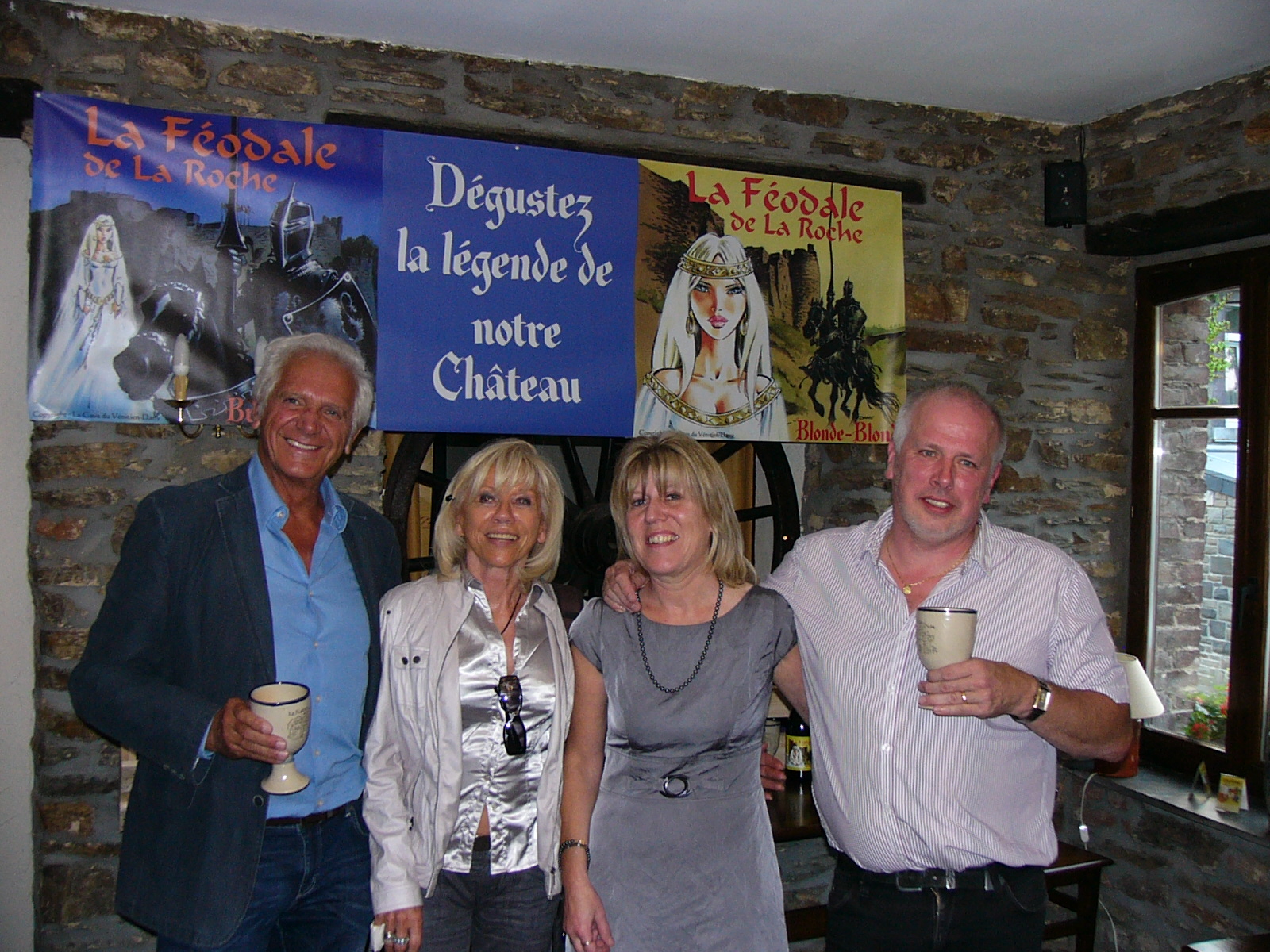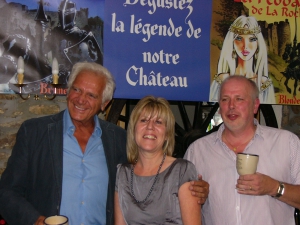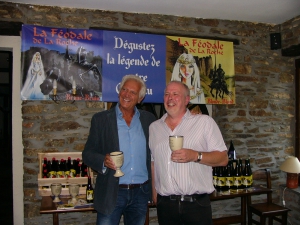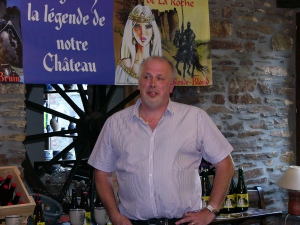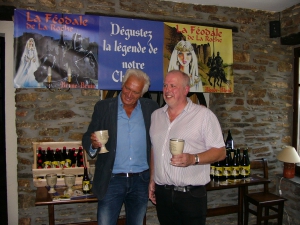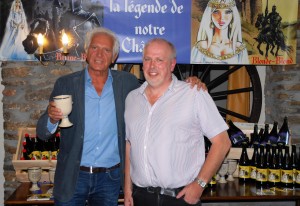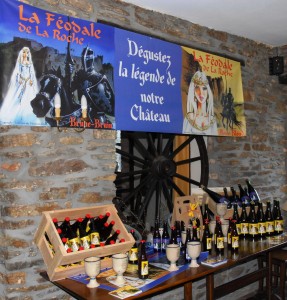The Féodale
Blond or dark
The blond Féodale is made of pilser malt for the base, dried at very low temperature (about 50°) to keep the enzymes active, and another malt dried at a higher temperature (between 60 and 110°) to give a unique taste between biscuit and caramel, and some color.
We use water from the Belgian Ardennes, and 2 types of hops (German type), giving a pleasant yet not too strong bitter taste, and a delicate scent.
Finally, orange peels are added in order to give more flavor without dominating or disgusting.
- Available in 33cl or 75cl
- 6,5% alcohol (volume)
The dark Féodale follows the same recipe, but a more kilned malt is added, giving him its color and its typical taste.
- Available in 33cl or 75cl
- 7,5% alcohol (volume)
The glasses
As the saying goes, “one size does not fit all”. It is the same for beer glasses.
To enjoy the taste of our Féodale, we selected two types of glasses to serve it.
The “Bacchus” glass
The “Calice” glass
It allows beers with a large aromatic palette to free more easily all their flavors.
Its shape and the materials used also recall medieval times, highlighting the name of the Féodale.
These are manufactured by pottery Lardinois in Bouffioulx, former potter from “Les grès de La Roche”.
The name
The name Féodale from La Roche is related to our castle which dates back to the period of feudalism. The labels are based on the legend which portrays the Countess Berthe from La Roche and the Black Knight.
The legend of Berthe and the Black Knight
A Lord of La Roche, having only a daughter, Berthe, as sole heir to his powerful inheritance, staged a grand tournament at his castle. The hand of the wealthy heiress would go to the Knight who could beat all comers in a fair fight.
The first Knight to come forward was the Count of Montaigu, a huge man, proud of his strength, who had never been unhorsed by an adversary’s lance.
So of course no other champions came forward. […]
Read mode
Berthe and the Black Knight
The first Knight to come forward was the Count of Montaigu, a huge man, proud of his strength, who had never been unhorsed by an adversary’s lance.
So of course no other champions came forward.
Yet Count de Montaigu had already plighted his troth to Countess Alix de Salm.
Just as time was about to run out, a knight entered the courtyard. What an odd contender! He was small, almost a child, and at the sight of this puny champion, the Count de Montaigu was seized by a terrible fit of laughter.
Watched by the Knights and the Ladies, the unequal combat began.
With a terrible thundering from his battle steed’s hooves, Count de Montaigu galloped towards his feeble adversary, armed only with a light weapon, his horse armour-less. With marvellous dexterity, guided by an alert hand, in a single bound this nimble steed avoided the Count’s violent collision.
In an instant, the Count turned around and came back at a walk, slower and more methodically this time, bearing down on his deft rival. But try as he might, he missed him every time. He started to get terribly hot, and the little Knight reined back his steed, stopped, and stood waiting provocatively.
Taking advantage of the moment, the Count sped up. The huge man’s sword swung through the air, and like a steel lightning-bolt, whistled down upon the reckless youngster…
But already the little Knight was no longer there. The heavy Count, carried away by his inertia, lost his balance and was unhorsed. With a crash of breaking steel, he fell to the ground. The little knight inserted the fine blade of his light sword through the join in his helmet and slit the fearsome Count’s throat with a single blow.
Moments later, the happy father led the newly-weds to the nuptial chamber right at the top of the keep.
First thing next morning, the father stood waiting in the castle yard, impatient to witness and share the happiness of the young newlyweds. The sun climbed higher and higher, but still they failed to appear. Tired of this long wait in vain, he climbed the steps of the keep, ran to the nuptial chamber, and knocked at the door. No answer… Unable to suppress his paternal anxiety, the father pushed the door; it opened, but the chamber was empty and the window open. With one bound, the panicking father rushed over to it, peering down into the void in terror: at the bottom of the abyss, on the rocks on the banks of the Ourthe, lay two dots – one black, the other white.
The mysterious Knight was none other than Countess Alix de Salm, who had made a pact with the Devil, then disguised herself to take her vengeance on Count de Montaigu and the beautiful Berthe de La Roche…
Want to taste our Féodale?
Dany the cartoonist
The meeting
Late June 2010, Dany exhibited his drawings of “Châteaux de Wallonie” in feudal castle of La Roche.
To mark the opening of the exhibition, and with the complicity of La Roche Initiative union, Dany tasted the “Féodale” iand like it for its lightness and freshness.Claude discusses with him the possibility of designing two drawings for the labels of his Féodale from La Roche: one for the blond (fomerly amber) and the other for the dark one.
Dany shows interest in the project which highlights the famous legend of Countess Berthe and the Black Knight that he finds exciting.













